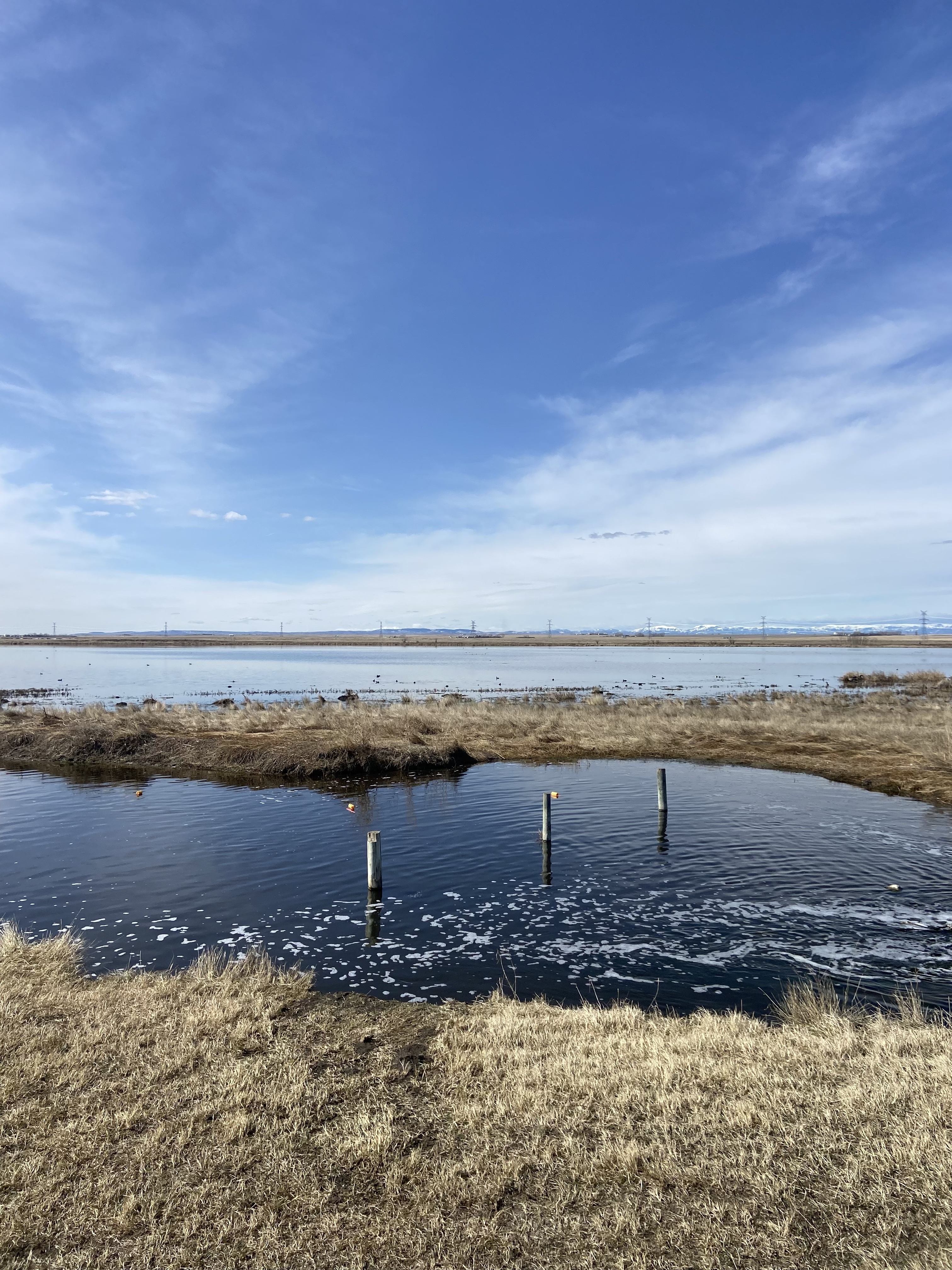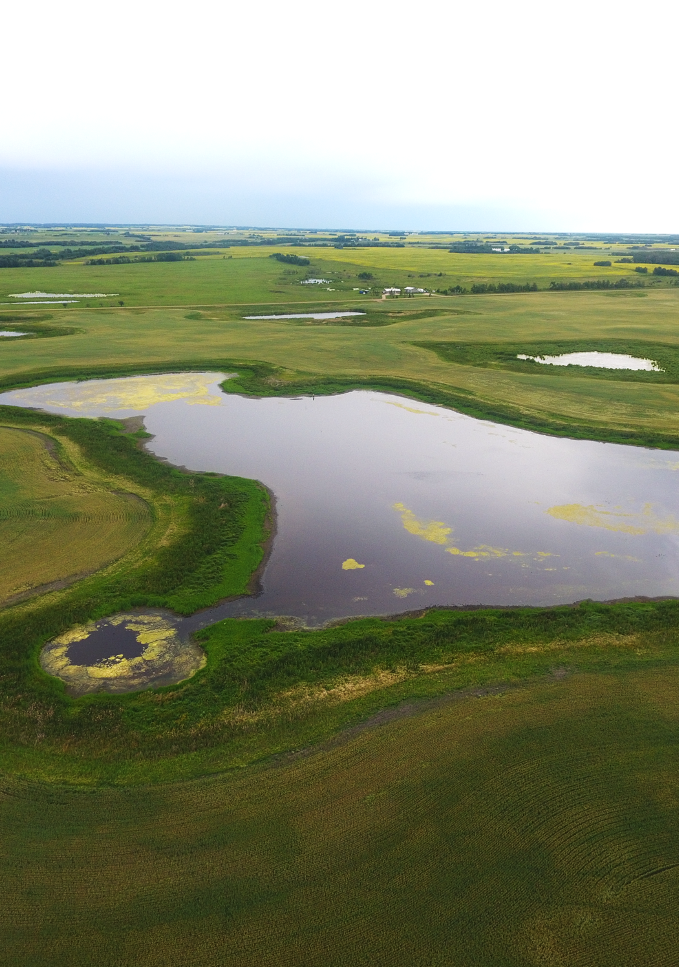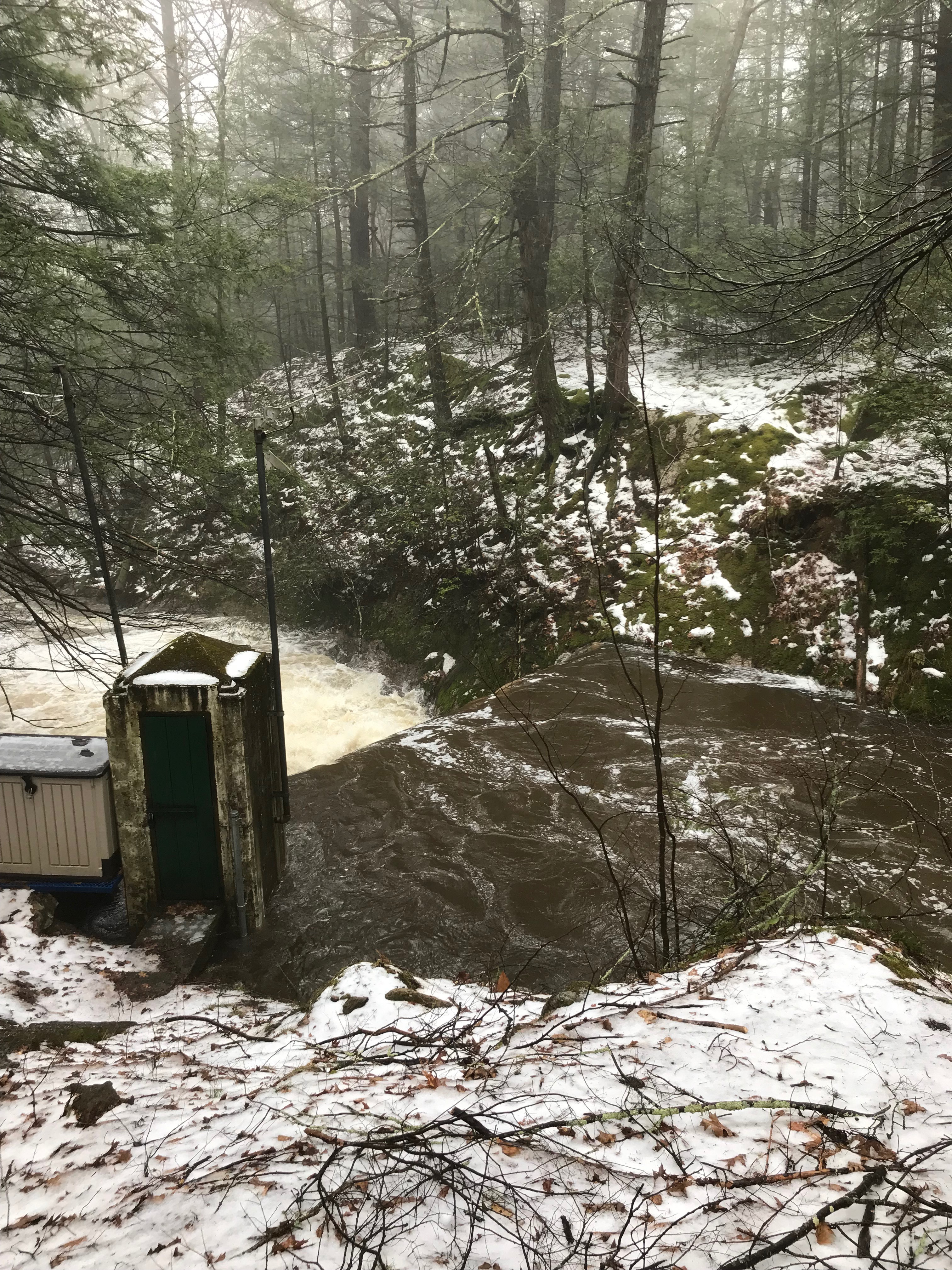Current
Is a wetland restored with wastewater effluent a carbon sink or source?

Wetlands capture and store carbon, and so wetland restoration and preservation are potentially effective nature-based climate solutions. Wetlands also provide additional ecosystem services such as the treatment of municipal and industrial wastewater through intense processing that removes nutrients and other pollutants. The Frank Lake wetland complex in southern Alberta, Canada, represents a complicated management scenario. Frank Lake is ecologically, economically, and culturally important, as it was restored with inputs of agricultural and municipal wastewater beginning in 1989. While the wetland processes and removes wastewater-derived nutrients, the impacts on net carbon storage here and in similar treatment wetlands is unclear. To build a whole-ecosystem carbon budget for Frank Lake, we integrate techniques across the terrestrial-aquatic boundary for the entire wetland using a combination of eddy-covariance measurements, plant biomass sampling and remote sensing of shoreline vegetation, water-air greenhouse gas emissions, and targeted sampling of lateral carbon inputs and outputs.
Illuminating riverine dissolved organic carbon dynamics using carbon age

Understanding the global carbon cycle is essential to predicting future climate change. Dissolved organic carbon (DOC) is one of the largest carbon reservoirs globally; the amount of carbon stored in oceans alone as DOC exceeds the amount of CO2 in the atmosphere. Despite being one of the largest carbon reservoirs globally, riverine DOC sources are poorly quantified. Radiocarbon (14C) can provide important information on riverine DOC age. An increase in DOC age in rivers over time suggests the mobilization of once-sequestered terrestrial carbon stocks in rivers, potentially from direct or indirect anthropogenic activity. DOC that was once “removed” from the global carbon cycle (e.g., stored in terrestrial soils) that is laterally exported to rivers could potentially be respired or photochemically oxidized and evaded to the atmosphere, thus contributing to global carbon dioxide emissions. We measured 14C-DOC on the Connecticut River seasonally and long-term to address if and when aged DOC is mobilized in rivers. This is necessary to predict anthropogenic perturbations to terrestrial carbon storage. This work was funded by the NASA Connecticut Space Grant.
Past
Evaluating the effects of agricultural land use on wetland greenhouse gas emissions

The Prairie Pothole Region (PPR) is the largest wetland complex in North America, with millions of wetlands punctuating the landscapes of Canada and the United States. In this region, wetlands have been dramatically impacted by agricultural land use, with unclear implications for regional to global greenhouse gas emissions budgets. To address this, we surveyed wetlands across all three Canadian prairie provinces in the PPR to determine whether greenhouse gas emissions patterns of carbon dioxide (CO2), methane (CH4), and nitrous oxide (N2O) from aquatic habitats differed among wetlands embedded in cropland versus grassland habitats. This is an important step toward understanding wetland emissions responses to land use in the PPR and other wetland-rich agricultural landscapes.
The coupling of dissolved iron and dissolved organic matter

In rivers, iron speciation and concentration contribute to water color, affect the cycling of nutrients such as phosphorous, and support downstream (i.e., coastal and ocean) aquatic productivity and CO2 uptake. This is because iron is often a limiting nutrient in the coastal and open ocean due to the loss of iron in estuaries. Significant riverine export of iron to coastal zones is largely dependent on interactions with dissolved organic matter (DOM), often sourced from terrestrial environments; thus, the cycling of DOM and iron vary temporally, as terrestrial sources of iron and DOM depend on changing hydrologic and seasonal drivers. We evaluated the concentrations and downstream fluxes of two size fractions of dissolved iron in relation to water temperature, river discharge, and DOM composition using long-term frequent monitoring on the Connecticut River mainstem. This approach allowed us to establish how the timing of the downstream export of iron might impact coastal and ocean productivity and CO2 uptake and determine the mechanistic drivers behind changing iron concentrations.
Ferric iron impacts dissolved organic matter UV-vis absorbance in natural waters

Dissolved organic matter (DOM) composition and amount impacts the functioning of aquatic ecosystems by limiting the amount of UV and visible light (UV-vis), controlling nutrient cycling and trace metal speciation and fate, and by supporting heterotrophy. Because DOM absorbs light, UV-vis absorbance measurements have been widely used as a cost- and time- efficient method of estimating DOM composition and amount. However, the presence of ferric iron in filtered water results in overestimations of DOM UV-vis absorbance. We quantified the contributions of dissolved ferric iron to UV-vis absorbance on commonly measured DOM UV-vis parameters for natural water samples collected from the Connecticut River watershed over 1.5 years. Further, we evaluated how ferric iron interference in UV-vis absorbance measurements contributes to systematic biases in the interpretation of DOM composition and amount by land-use, season, and hydrology.